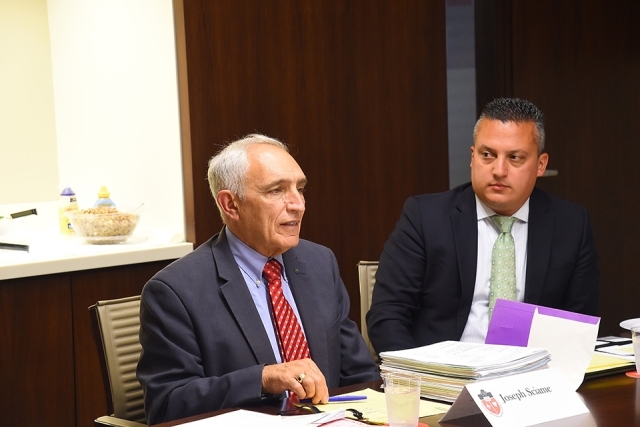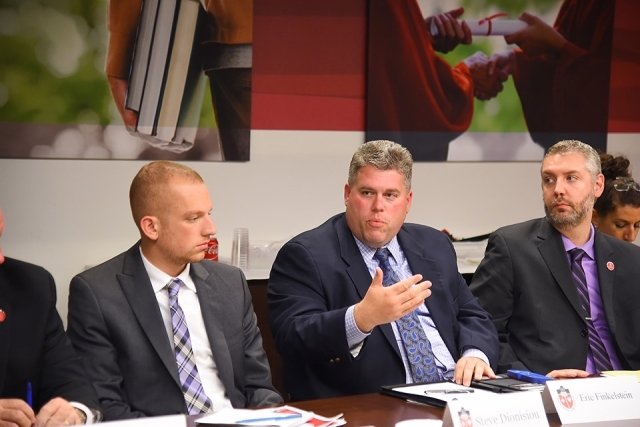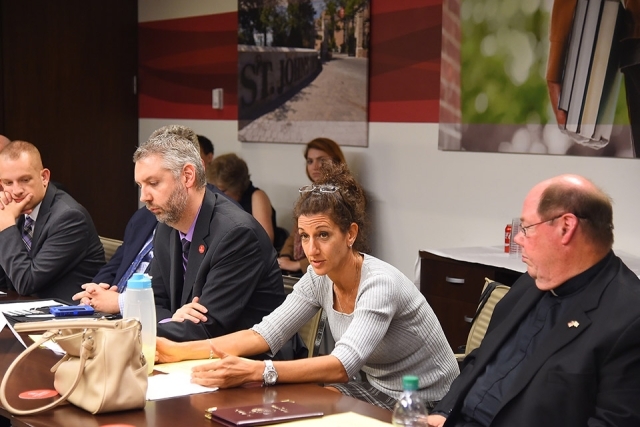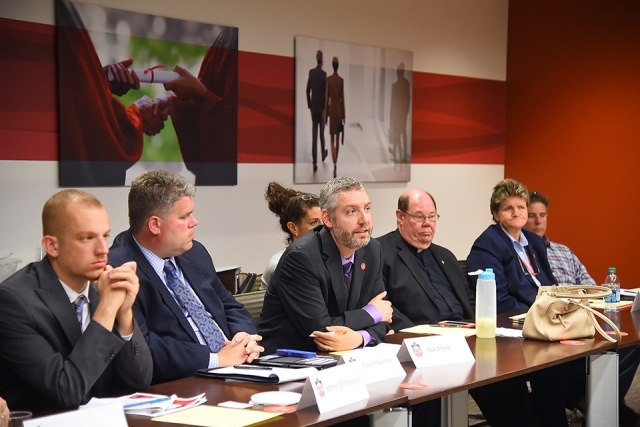Part III of our series, "Twenty Years Ago: Residence Halls Usher in a New Era for St. John’s"








This fall marks the 20th anniversary of the opening of St. John’s University’s Residence Village, a project that represents a quantum shift in the University’s evolution from a purely commuter school to one with a truly global reach.
Like any project of this scale, there were many challenges, including allaying the concerns of the neighboring community. Many neighbors did not welcome the idea of residence halls and community concerns were voiced at spirited local civic meetings, in the press and in organized community opposition. St. John’s addressed their issues through the creation of the St. John’s University Queens Community Dialogue Group, spearheaded by Joseph Sciame ’71Ed, Vice President, Office of Community Relations.
After holding several leadership positions at St. John’s, most notably as Vice President for Financial Aid, Mr. Sciame was tasked with engaging with the local community about the impending construction of the Residence Village in 1994.
A St. John’s employee since 1962, Mr. Sciame has been a devoted member of the campus community, a longtime community activist, Catholic leader, a US Army veteran, and proud member of the Italian-American community. His memberships and leadership positions on local and national boards, as well as in civic, cultural, religious, and educational groups are legion.
Mr. Sciame was encouraged to create what would eventually become the Community Dialogue Group by Claire Shulman, former Borough President of Queens. In those early days, Mr. Sciame represented St. John’s during hearings on issues ranging from construction and parking to noise complaints and student conduct.
At the time, many neighbors feared that construction of the Residence Halls would seriously impact nearly every quality of life issue surrounding the campus, and Mr. Sciame was faced with growing community resistance. “I mitigated many local concerns during these meetings,” Mr. Sciame noted. More importantly, he strengthened already close ties he formed with local leaders during his many years of service at the University.
It seemed natural to continue meeting after the Residence Village was completed to keep the lines of communication open between local residents and the University, he said. As the group evolves, St. John’s remains an integral part of the community—taking part in local celebrations and inviting neighbors to the many concerts and events hosted on campus.
Today, the group meets on a bimonthly basis and is comprised of representatives from five civic associations contiguous with the Queens, NY, campus, including Hillcrest Estates, Jamaica Estates, Flushing Heights, Fresh Meadows, and Utopia Estates. These boards fall under the governance of Queens Community Board 8.
New York City Police Department’s 107th Precinct, which serves the area encompassing St. John’s, is represented, as are the offices of Assemblyman David I. Weprin, Assemblywoman Nily Rozic, State Senator Leroy Comrie, and Queens Borough President Melinda Katz. The New York City Department of Buildings, the Central Queens Historical Association, and the Union Turnpike Merchants Association are also included.
St. John’s is represented by Mr. Sciame and Paul Lazauskas, Associate Director of Community Relations, as well as representatives from the Offices of Campus Ministry, Residence Life, Public Safety, Judicial Affairs, the Department of Campus Facilities and Services, and the Division of Student Affairs.
Occasionally, issues arise regarding student conduct off campus, and Mr. Sciame often addresses the concerns of neighbors personally, while also referring them to Public Safety or Judicial Affairs for a resolution.
“We have more than 3,000 students living in supervised housing (on campus and in the Henley Road Residence, Seton Complex, and DePaul Houses off campus) but at times problems arise from rented homes that are off campus,” he said. While the University has no jurisdiction over these properties, Mr. Sciame emphasized that St. John’s does as much as possible to address the concerns of residents and refer these issues to the relevant city agencies.
Mr. Sciame sits on several local boards as well, representing the University at meetings, events, and celebrations.
For several years there was a similar Community Dialogue Group centered on the University’s Staten Island, NY, campus. Currently, the campus maintains close ties with Borough President James Oddo’s office, and is often invited to special events.
Mr. Lazauskas is also responsible for community outreach around the Manhattan, NY, campus, working closely with the Village Alliance and Carlina Rivera, New York City Councilwoman for the Second District, hosting events and attending local celebrations.
The Community Dialogue Group has become a model for other schools to follow. Institutions from as far as Providence College in Rhode Island and Syracuse University in upstate New York, and as locally as Queens College, seek Mr. Sciame’s counsel.
Kevin Forrestal ’69CBA, President of the Hillcrest Estates Civic Association and the Queens Civic Congress, initially opposed construction of the Residence Village and represented community concerns over the University’s transition from a commuter to a residential campus. The one constant through all the many meetings and hearings, Mr. Forrestal noted, has been the presence of Mr. Sciame. “Relations have improved very dramatically over the years,” he stressed. “And I think Joe deserves much credit.”
Related News
St. John’s Breaks Ground on New Basketball Facility and Recreational Upgrades
Construction will soon begin on a new basketball practice facility on St. John’s University’s Queens, NY, campus that serves as the first step in the renovation and modernization of student recreational resources.
New Chief of Public Safety Is at Home at St. John’s
A native of Hamden, CT, Dan Rhone grew up in the heart of BIG EAST Conference culture. When an opportunity emerged to direct the Department of Public Safety at St. John’s University, it was, as the longtime safety official said, a “layup” of a decision—that is, an easy choice.
Annual Move-In Weekend Celebrates the Next Generation of Johnnies
Carrying boxes, carts, and an abundance of enthusiasm, 2,627 resident students moved into St. John’s University’s Residence Village over Labor Day weekend.
